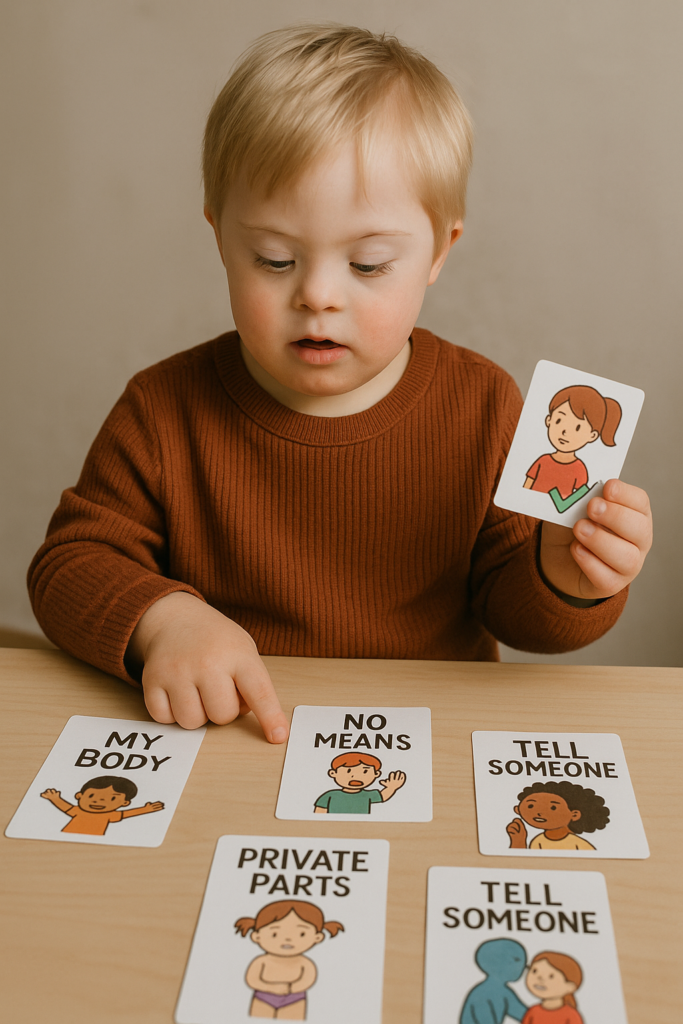Every child has the right to feel secure, heard and empowered. For children with special needs, learning about personal safety isn’t just important—it’s vital. These children may face unique challenges, such as difficulties in communication, social interaction to understanding complex concepts. Teaching personal safety skills helps children feel confident and ask for help when they feel unsafe.

Why Personal Safety Education is Essential for Children with Special Needs
1. Greater Risk of Exploitation
Children with physical or developmental disabilities are statistically more at risk of experiencing abuse or neglect. They may have trouble understanding social signals, body language and communicate when something feels wrong.
2. Confidence Through Knowledge
Teaching key safety concepts—like recognizing inappropriate behavior, understanding body boundaries and knowing they have the right to say “no”—builds self-confidence and promotes independence.
3. Strengthening Communication Skills
Using visual tools, role-playing and clear simple language helps children better understand personal safety and effectively report any incidents might happen.
4. Promoting Inclusion and Equal Protection
Customized safety education ensures all children, regardless of ability, receive the same level of protection, support and understanding.

Effective Strategies for Teaching Personal Safety
Use of Visual Supports
Tools like flashcards, picture books or social stories can help make abstract concepts more tangible and easier to remember.
Consistency Through Repetition
Reinforcing lessons regularly through routines helps children retain and apply personal safety knowledge in real-life situations.
Practice Through Role-Playing
Simulating common scenarios in a safe setting enables children to build their confidence and practice how to respond appropriately
Collaboration with Caregivers and Educators
Working closely with parents, teachers and therapists ensures a consistent message is delivered across all environments, enhancing the child’s learning.
Key Personal Safety Concepts to Teach
Understanding personal body boundaries and respecting others
Identifying and reporting inappropriate behavior
Learning to say “no” and when to seek help
Distinguishing between safe and unsafe secrets
Knowing emergency contact details and how to ask for help

Conclusion
Personal safety education should be a standard part of every special needs child’s development plan. It is not merely an add-on—it’s a fundamental skill that supports their well-being, boosts their confidence and helps create a more inclusive and protective environment. Let’s work together to ensure every child understands their rights and knows how to stay safe.